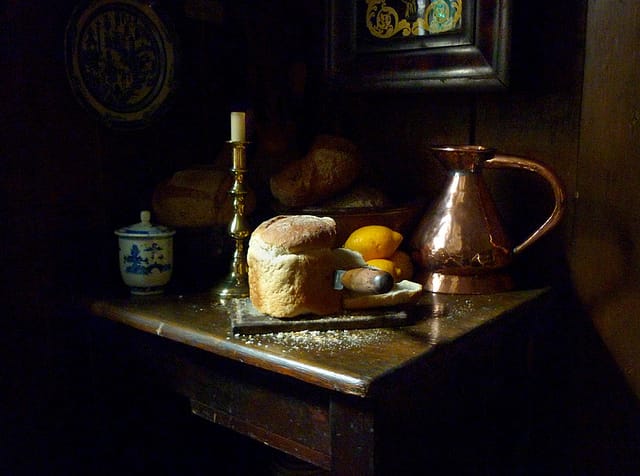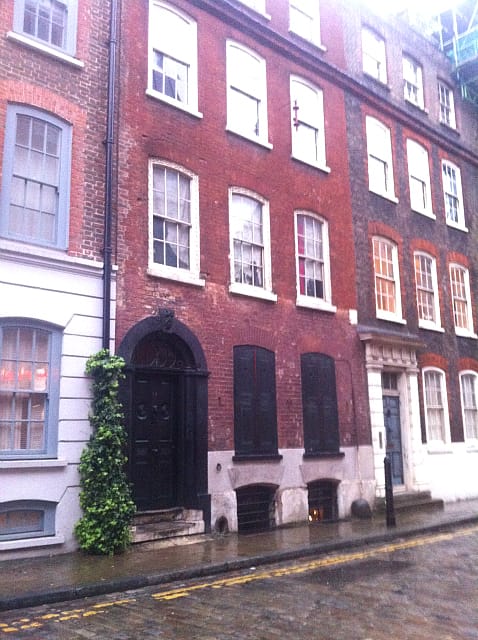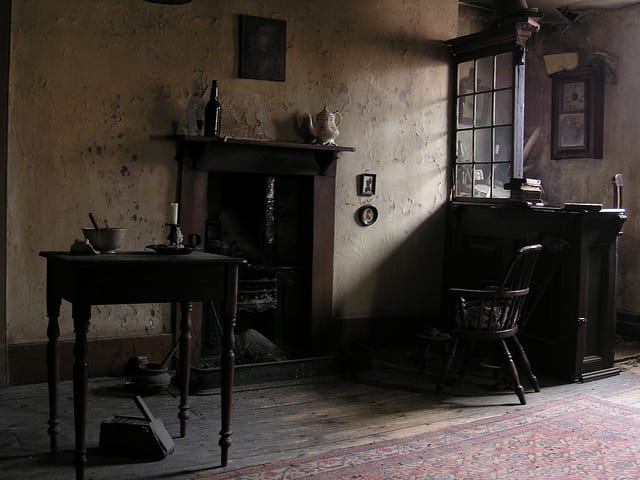A Home That Makes the Old Masters Come Alive
Art always has some sense of place, whether it is the result of where it was created or the setting it is placed in, but art as a place can be something truly transporting that goes beyond installation to become a world unto itself. I've seen shades of this in two current shows, Jonah Freeman and Ju

Art always has some sense of place, whether it is the result of where it was created or the setting it is placed in, but art as a place can be something truly transporting that goes beyond installation to become a world unto itself. I’ve seen shades of this in two current shows, Jonah Freeman and Justin Lowe’s Stray Light Grey that subverts Marlborough Gallery into urban backrooms and Andrew Ohanesian’s The House Party at Pierogi’s Boiler Room that brings suburbia to Brooklyn, and even in the ongoing, heavily atmospheric theatre experience Sleep No More with its beautiful 1930s time travel. All of these have led me to think on one of the most engaging and curious of these kinds of art experiences: the Dennis Severs’ House in London.

The Dennis Severs’ House isn’t new and it isn’t a secret, most any London guidebook will at least mention it, but descriptions always focus too heavily on the period aspects of the house, when it’s really the internal feel that you get from the place that makes it so strangely compelling. There are ten rooms in the house located in the Spitalfields area, with each staged meticulously in an era from 1724 to 1914 by the late artist Dennis Severs. On a rainy April evening this year I visited the house, which was lit only by fireplaces crackling with flames and flickering candles. Visitors walk through in silence and alone, although there’s the feeling that someone else is always with you, and it isn’t just the recordings of muttered voices of the fictional Jervis family that supposedly lives in the house, it’s the artist himself.

Severs lived in the house from 1979 until 1999, when he died at the age of 51 from cancer. While he embraced and lived his day-to-day life immersed in English history, he was born in California, where at a young age he was drawn to what he called the “English light,” particularly in the works of the Old Masters. When he finally got to London, he acquired a derelict house at 18 Folgate Street, and for the next two decades worked to bring that Old Masters illumination to life. He did this through a careful arrangement of objects and light, and also sounds, smells, and even tastes elicited by the sight of half-drank wine or bread crumbs scattered from a torn loaf.

This was not meant to be a historic home. This, Severs declared, was as a “still-life drama,” where visitors passed “through a frame into a painting.” Severs’ vision is being remarkably maintained by Mick Pedroli, who lived with the artist in the house and continues to stay as its caretaker, greeting all visitors at the door. According to his Guardian obituary, Severs originally conducted the visits and was not shy about throwing people out who did not maintain the correct level of seriousness with his art. The experience is much friendlier now, although in a way, he’s still there, watching. The house’s motto is a brusk “You either see it, or you don’t,” and notes from Severs left in each room harass you to stop looking at objects and pay attention to the whole picture.

David Hockney is said to have called the house “one of the world’s greatest works of opera,” and like an opera, it is full of tense drama (some that verges on melodrama). You start your visit in the unsettlingly dark cellar, and then find yourself in the inviting warmth of the kitchen. As you journey up, you pass through salons, parlors, and bedrooms, all relating to some stage of the life of the imagined Jervis family and presented in a tableau which you could easily imagine in brushstrokes on some Baroque canvas.
In the William Hogarth-influenced smoking room, chairs are thrown back from a table and hats strewn around, as if one of Hogarth’s debaucherous parties had just vacated after a tumultuous night of drinking. A bed in rich red colors that could have seeped out of a Joshua Reynolds painting offers a moment of quiet in shadows. Much of the house has something dark both in its lighting and tone, and even the most whimsical room, a parlor where a tea party appears crashed as cups are spilled and a scone is skewered on a firepoker, has the chime of a clock sounding manically over an alarmingly yellow color scheme.
When you finally reach the top of the house, this lurking darkness has taken over. The fictional Jervis family has lost its fortune and the place is in tatters, the ceiling caving in, pieces of the staircase gone and used to fuel the fireplace. The desolation has a staying power even as you step from Severs’ world back into the London streets. While I don’t know if any contemporary artists working with transformative interiors have been to the Dennis Severs’ House, I certainly feel his presence in their work, or maybe it’s the ghost of his nagging words prodding me to stop looking at the surface and mentally inhabit the places they create. Either way, anyone looking to build worlds of their own could draw much from his intense commitment to perfecting a place where from your first steps inside you are submerged into the realm of his art.
The Dennis Severs’ House is at 18 Folgate Street in Spitalfields, London.





